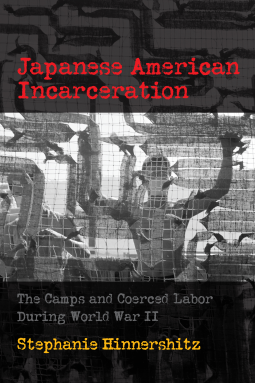
Japanese American Incarceration
The Camps and Coerced Labor during World War II
by Stephanie D. Hinnershitz
This title was previously available on NetGalley and is now archived.
Send NetGalley books directly to your Kindle or Kindle app
1
To read on a Kindle or Kindle app, please add kindle@netgalley.com as an approved email address to receive files in your Amazon account. Click here for step-by-step instructions.
2
Also find your Kindle email address within your Amazon account, and enter it here.
Pub Date Oct 19 2021 | Archive Date Jul 20 2021
Talking about this book? Use #JapaneseAmericanIncarceration #NetGalley. More hashtag tips!
Description
Between 1942 and 1945, the U.S. government wrongfully imprisoned thousands of Japanese American citizens and profited from their labor. Japanese American Incarceration recasts the forced removal and incarceration of approximately 120,000 Japanese Americans during World War II as a history of prison labor and exploitation.
Following Franklin Roosevelt's 1942 Executive Order 9066, which called for the exclusion of potentially dangerous groups from military zones along the West Coast, the federal government placed Japanese Americans in makeshift prisons throughout the country. In addition to working on day-to-day operations of the camps, Japanese Americans were coerced into harvesting crops, digging irrigation ditches, paving roads, and building barracks for little to no compensation and often at the behest of privately run businesses—all in the name of national security.
How did the U.S. government use incarceration to address labor demands during World War II, and how did imprisoned Japanese Americans respond to the stripping of not only their civil rights, but their labor rights as well? Using a variety of archives and collected oral histories, Japanese American Incarceration uncovers the startling answers to these questions. Stephanie Hinnershitz's timely study connects the government's exploitation of imprisoned Japanese Americans to the history of prison labor in the United States.
Advance Praise
"By showing us how imprisonment and prison labor shaped both the organization and implementation of Japanese American incarceration, Hinnershitz's book exposes a deeper infringement of Japanese Americans' rights than had been previously understood and compels us to revise how we teach this tragic chapter in American history."
—Erika Lee, author of America for Americans: A History of Xenophobia in the United States
Available Editions
| EDITION | Other Format |
| ISBN | 9780812253368 |
| PRICE | $39.95 (USD) |
Average rating from 3 members
Featured Reviews
The injustice done by the American government towards a part of its citizens, that of Japanese ancestry, during WWII has for a long time been a glanced-over subject both in art and academia. Luckily, this is slowly changing through albums such as Kishi Bashi's Omoiyari or the second season of the TV show The Terror. Stephanie Hinnershitz's rigorously well-researched and written book presents the topic from an academic perspective. Through it, we can see all of the wrongdoings of the USA and the rampant xenophobia and japanophobia, both of which continue up to present day.




